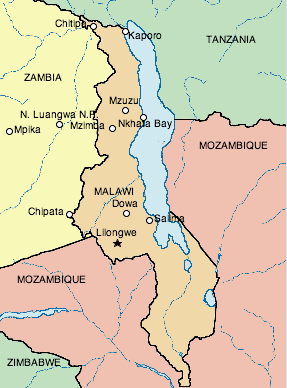Slave Trade At Malawi Lake

We are headed to Malawi Lake which is huge-of Malawi�s 118,000 sq km 20% is taken up by the long narrow lake which nearly runs approximately 500km down the length of the thin sliver of land which dips deep into Mozambique.
In the mid 1800’s an Arab trader from Oman shipped thousands of slaves annually to the eastern lake shore before they made the three to four month march to Kilwa on the coast. At the same time a tribe of Islamic converts, the Yao, captured the local Maganja and Chewa people in large numbers for sale to the Portuguese. Villagers unfit for shipment were slaughtered.
In 1859 David Livingstone visited the area and tried to set up a mission to interrupt the slave trade. After his death in 1874 Scots missionaries, inspired by Livingstone�s humanitarianism, risked their lives to end local wars and curb slavery and provided education to thousands of the locals. In 1895 the first British Commissioner dealt the final death blow to the slave trade in Malawi with the defeat of the last two Yao traders in the south and the execution of Mlozi, the self-styled Sultan at Karonga in the north.
Malawi was led to independence by Dr. Hastings Kamuzu Banda who maintained absolute power until 1992 when a group of Catholic bishops publicized the Lenten Letter which documented the failings and abuse of power of the Banda administration. An election the following year was won by the current president Bakikli Muluzi. However, the Capetown Cape News reported June 17 that a priest in Malawi was arrested for translating documents opposing a third-term bid for President Muluzi. The priest said he was arrested in the central district of Kasungu after taking documents to be typed. He was told he was in possession of seditious material. So the battle for democracy rages on.
Tags: African Continent, Malawi


Leave a Reply